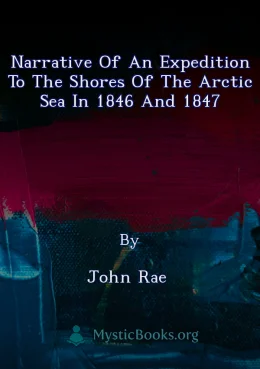
Timeline
Title
Country/Nationality
John Rae
John Rae was a Scottish surgeon who explored parts of northern Canada.
Rae explored the Gulf of Boothia, northwest of the Hudson Bay, from 1846 to 1847, and the Arctic coast near Victoria Island from 1848 to 1851. In 1854, back in the Gulf of Boothia, he obtained credible information from local Inuit peoples about the fate of the Franklin Expedition, which had disappeared in the area in 1848. Rae was noted for his physical stamina, skill at hunting, boat handling, use of native methods, and ability to travel long distances with little equipment while living off the land.
Rae was born at the Hall of Clestrain in Orkney in the north of Scotland with family ties to Clan MacRae. After studying medicine in Edinburgh, he graduated with a degree from the University of Edinburgh and was licensed by the Royal College of Surgeons of Edinburgh.
He went to work for the Hudson's Bay Company as a surgeon, accepting a post at Moose Factory, Ontario, where he remained for ten years. While working for the company, treating both European and indigenous employees, Rae became known for his prodigious stamina and skilled use of snowshoes. He learned to live off the land like a native and, working with the local craftsmen, designed his own snowshoes. This knowledge allowed him to travel great distances with little equipment and few followers, unlike many other explorers of the Victorian era.
With the prize money awarded for finding evidence of the fate of Franklin's expedition, Rae commissioned the construction of a ship intended for polar exploration, the Iceberg. The ship was built at Kingston, Canada West. Rae moved to Hamilton, Canada West, also on Lake Ontario, in 1857, where his two brothers lived and operated a shipping firm on the Great Lakes.
The Iceberg was launched in 1857. Rae intended to sail her to England the following year to be outfitted for polar voyages. In the meantime, she was put to use as a cargo ship. Tragically she was lost with all seven men on board in 1857, on her first commercial trip, hauling coal from Cleveland, Ohio, to Kingston. The wreck, somewhere in Lake Ontario, has never been located. While in Hamilton, Rae became a founding member of the Hamilton Scientific Association, which became the Hamilton Association for the Advancement of Literature, Science and Art, one of Canada's oldest scientific and cultural organizations.
In 1860, Rae worked on the telegraph line to America, visiting Iceland and Greenland. In 1864, he made a further telegraph survey in the west of Canada. In 1884, at age 71, he was again working for the Hudson's Bay Company, this time as an explorer of the Red River for a proposed telegraph line from the United States to Russia.
John Rae died from an aneurysm in Kensington on 22 July 1893. A week later his body arrived in Orkney. He was buried at St Magnus Cathedral, Kirkwall.
A memorial to Rae, lying as in sleep upon the ground, is inside the cathedral. The memorial by North Ronaldsay sculptor Ian Scott, unveiled at Stromness pierhead in 2013, is a statue of Rae with an inscription describing him as "the discoverer of the final link in the first navigable Northwest Passage." Rae Strait, Rae Isthmus, Rae River, Mount Rae, Point Rae, and Rae-Edzo were all named for him.
Books by John Rae

New Adventures of Alice
The book opens with a little girl, Betsy, wishing for another Alice book. She passes into a dream, and finds in the attic a book which begins with Alice reading Mother Goose rhymes to her kittens, leading to further adventures.

Narrative of an Expedition to the Shores of the Arctic Sea in 1846 and 1847
John Rae's "Narrative of an Expedition to the Shores of the Arctic Sea in 1846 and 1847" provides a firsthand account of his crucial contributions to charting the Northwest Passage. Rae, known for his adeptness in wilderness navigation and his respec...